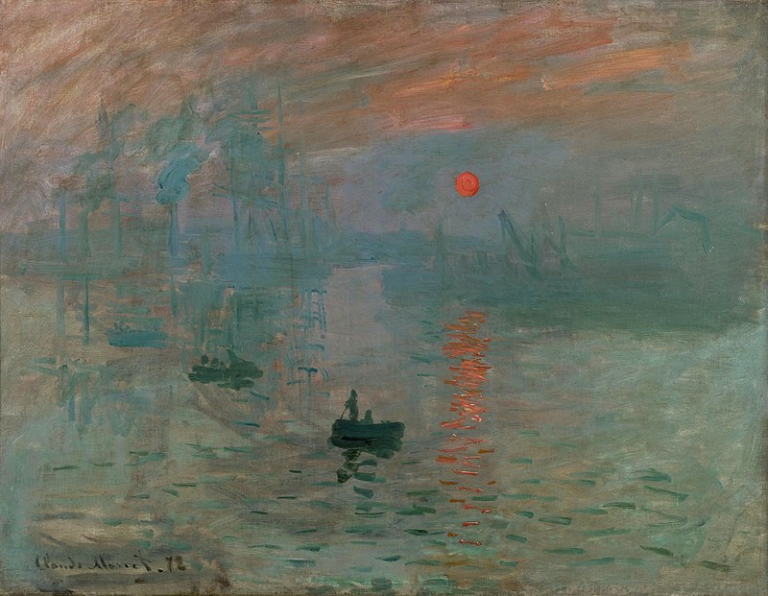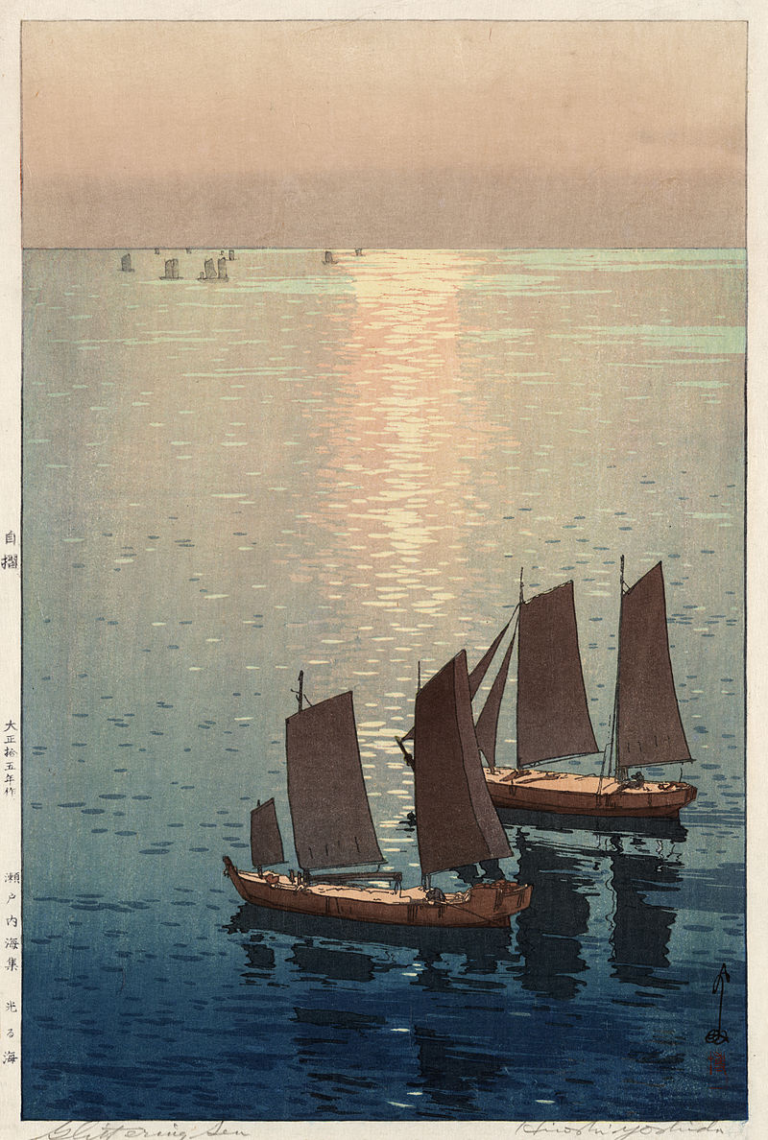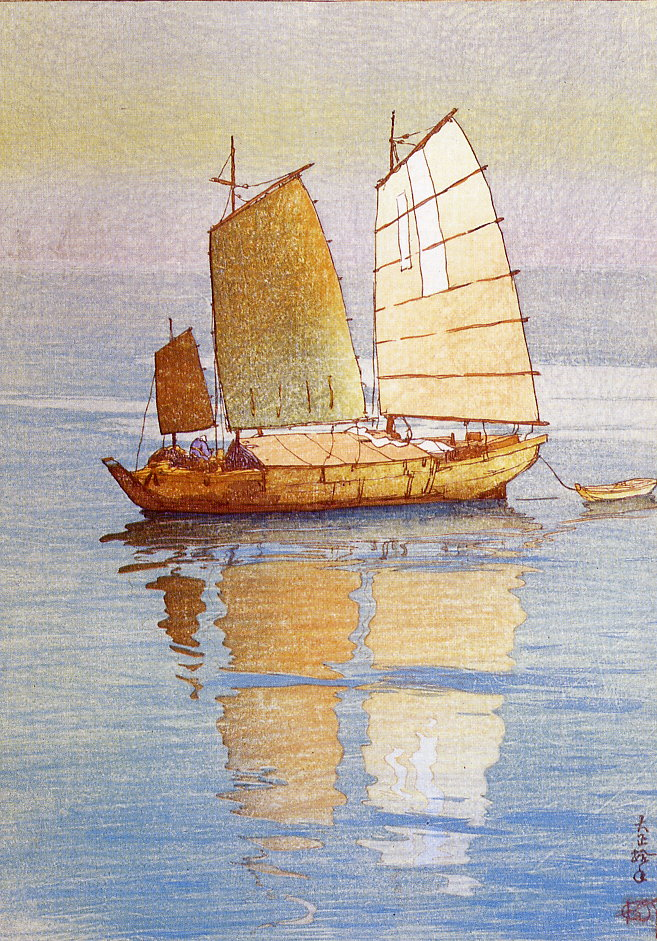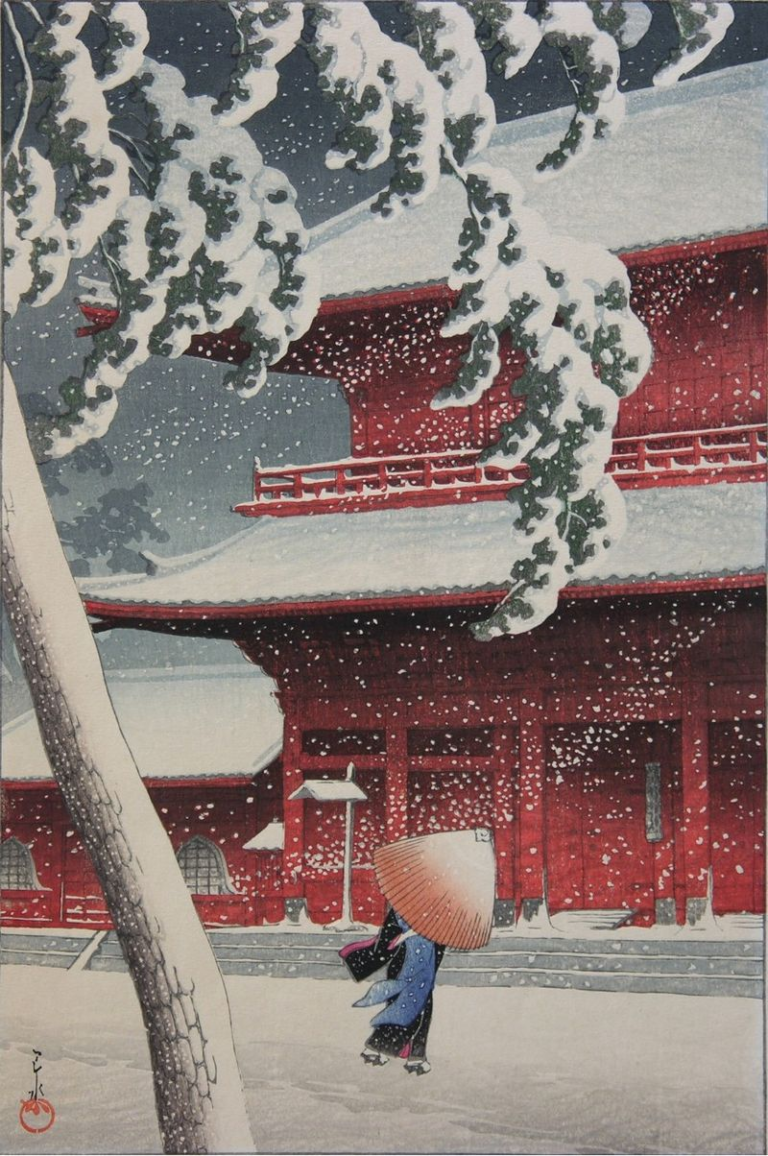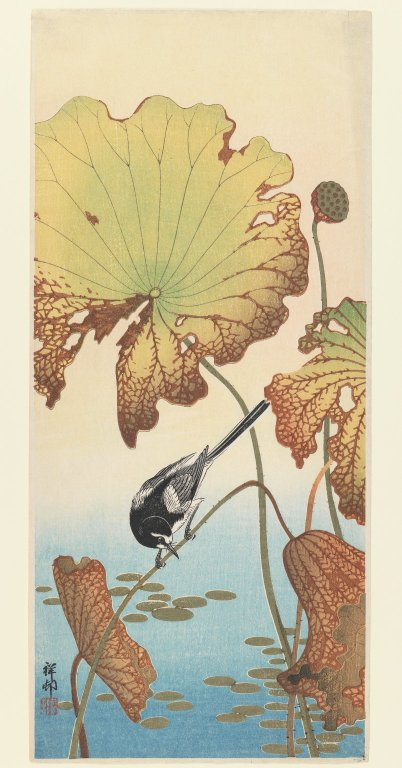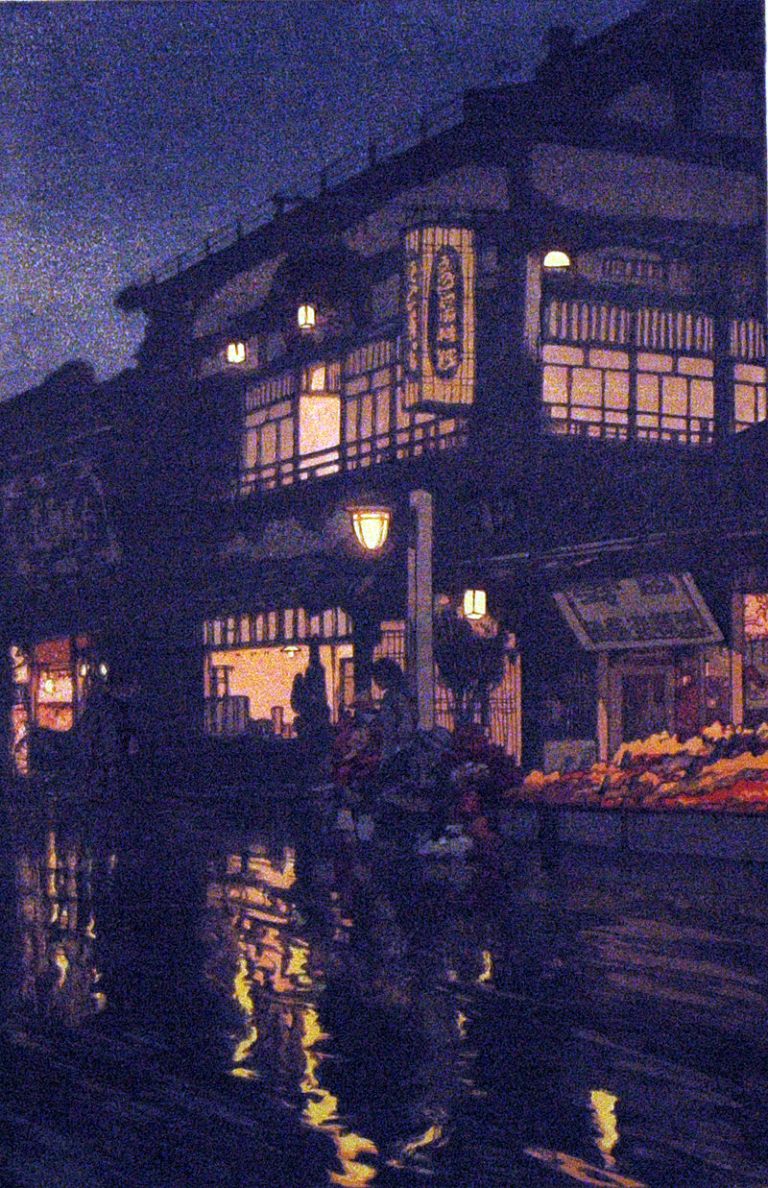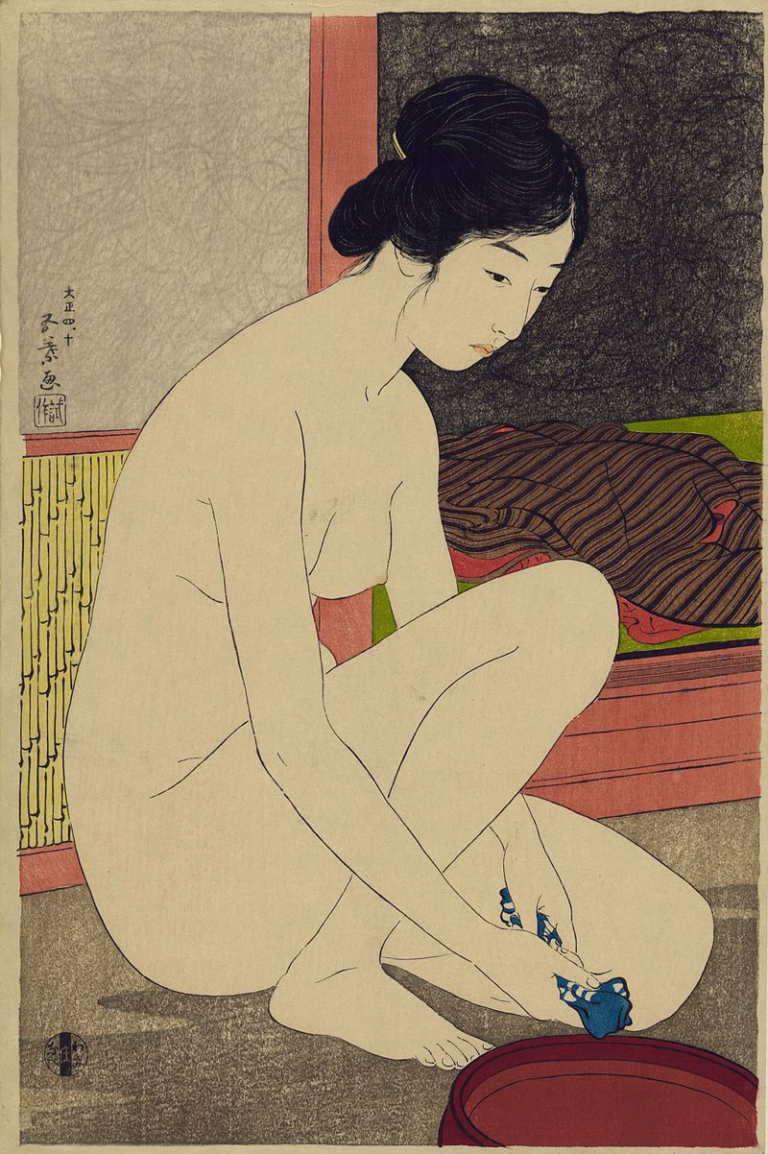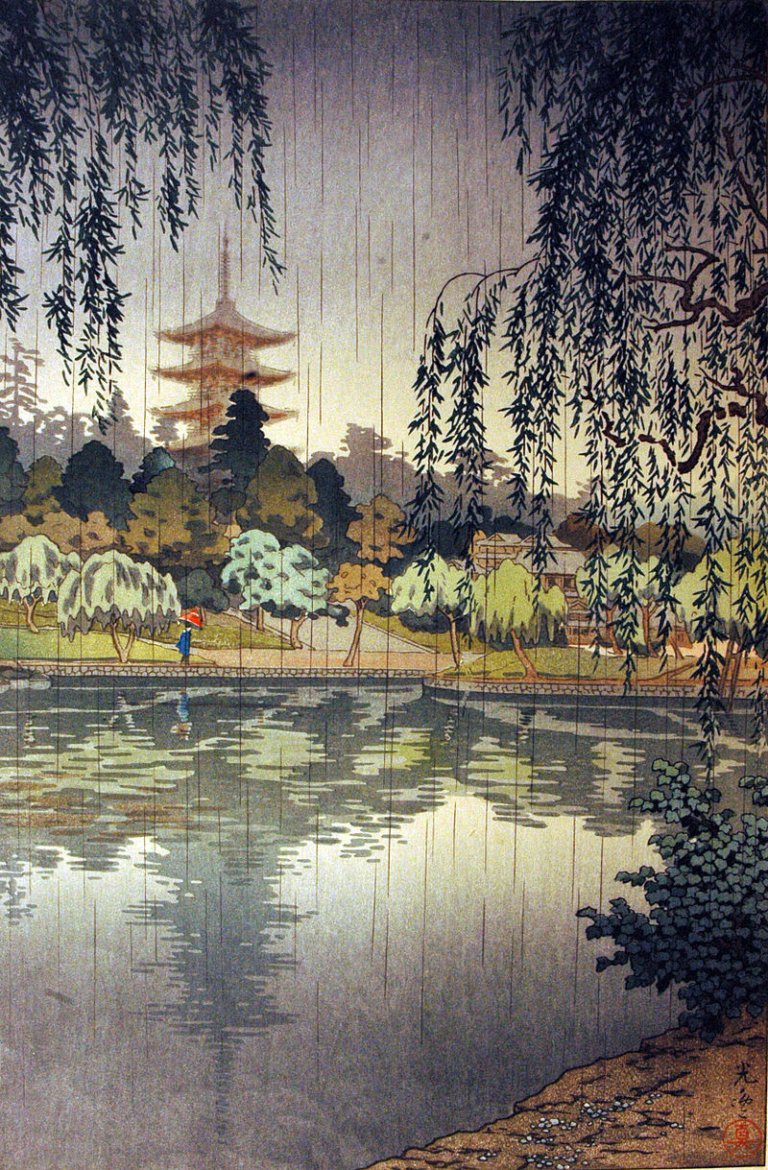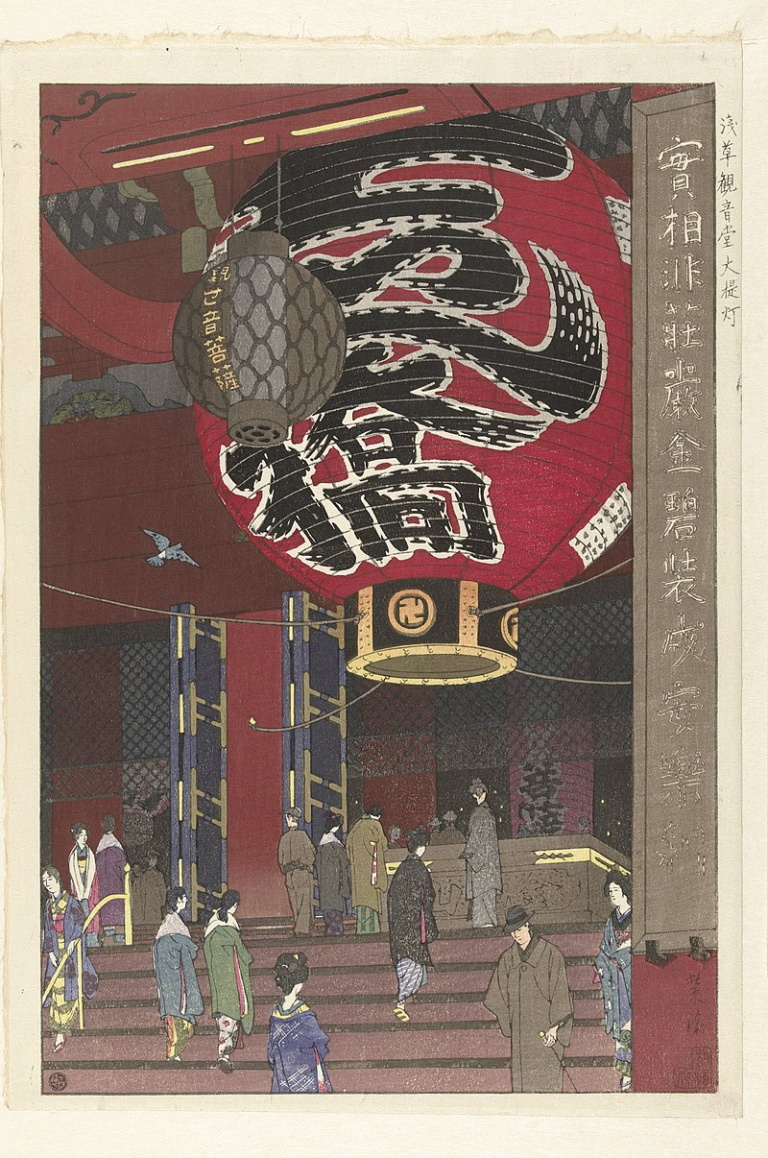The Pine Island in Night Rain, Hasui Kawase, 1920
Origins
The history of art in Japan is deeply marked by the competition between native Japanese art and the incorporation of external influences. These have most often been Chinese due to the notable interconnectedness between the history of both countries, which led to the birth and adaptation of techniques like ink-wash paintings and kanji (characters adapted from the Chinese script used in Japanese writing). However, the Chinese were not the only ones influencing Japanese art – after the isolationist foreign policies of the Edo period were abolished in the Meiji Restoration in the second half of the 19th century, Western influences poured into Japan, reaching diverse areas of life. One of these was art, where several techniques and elements were introduced and incorporated in native Japanese art movements. In this article, we will focus in one of those Japanese art movement with remarkable western influence called Shin-hanga.
Shin-hanga
Shin-hanga, which translates to “New Prints”, was an art movement prevalent in Japan in the first half of the 20th century, mainly characterized by the rekindling of traditional Japanese woodblock prints (known as ukiyo-e), fusing them with mainstream Western traits.
This movement was created and developed by the publisher Watanabe Shōzaburō (1885-1962). His inventive mind saw the potential in merging the traditional attributes of ukiyo-e, such as the subject matter of the artwork or the joint system of division of labour between artist, carver, printer and publisher, with thriving European techniques, such as the Impressionist focus on capturing mundane activities (largely compatible with the subject matter of ukiyo-e, which also focused on everyday affairs) as well as light and human emotion, creating romanticized and idealistic Japanese scenes. He approached struggling artists in Japan to carry out his vision and, although Shin-hanga did not (initially) find much success among Japanese people, Watanabe’s idea proved successful in European communities.
Influences
The influence of Impressionism and valued Western art attributes becomes distinctly visible when comparing specific artworks, such as Claude Monet’s Impression, Sunrise (1872) and Glittering Sea by Hiroshi Yoshida (1926). The latter shows Yoshida’s concern with staying truthful to traditional subject matters, but at the same time his attempt at infusing Impressionist traits, such as the capturing of fleeting moments of nature and their transitory essence, portrayed by the flickering waves and the sunlight reflected on their surface. Colors became brighter and more saturated than in the original ukiyo-e movement, to further appeal to Western audiences.
Shin-hanga ad content
Decline & Resurgence
As global tensions escalated towards the end of the 1930s, the Japanese military government tightened its grip on art and culture which, coupled with dwindling international demand, harshly debilitated Shin-hanga and its momentum. Although there was a resurgence after the war, the movement would never regain its pre-war significance, being preserved and sustained by only a handful of artists who kept it alive to our days.
The most notable Shin-hanga artists include Hasui Kawase, Hiroshi Yoshida, Elizabeth Keith, Goyo Hashiguchi, Ohara Koson, Tsuchiya Koitsu and Shiro Kasamatsu. Some of their most famous artworks can be appreciated below, or on the dedicated Google Arts & Culture page.
YKW // 9 March 2024
If you enjoyed our content and would like to support us:
We'd love to hear from you
Contact Us
Got any suggestion, recommendation or idea that you would like to share with us? Feel free!
